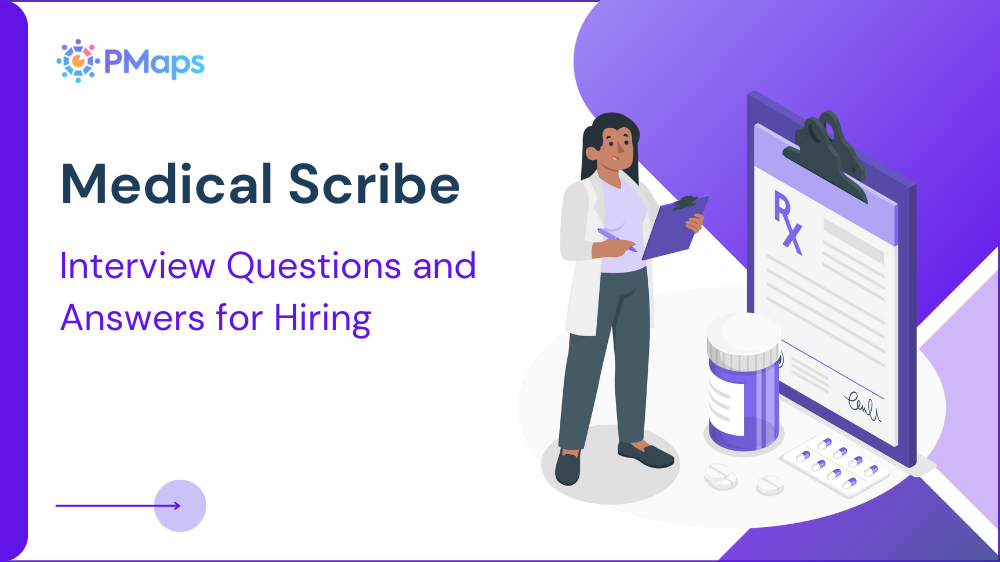
A Medical Coder ensures accurate translation of healthcare diagnoses, procedures, and medical services into universal codes for billing, insurance, and record-keeping. This medical coding job description is crafted for professionals with strong analytical skills, a deep understanding of clinical documentation, and fluency in ICD-10, CPT, and HCPCS standards.
Medical coders support physicians and healthcare administrators by converting patient data into structured codes that influence claims, analytics, and compliance outcomes. Unlike medical scribes who document during consultations, coders perform post-visit coding for audits, reimbursements, and regulatory reporting. This role is critical in hospitals, clinics, and third-party billing environments.
Hire smarter with the PMaps Medical Coder Assessment—evaluate coding accuracy, compliance awareness, and system readiness before onboarding.
Medical coder Roles and Responsibilities
Medical coders are responsible for accurate, compliant, and timely coding of patient encounters. Their work underpins clinical data integrity and financial operations. Key responsibilities include:
- Review patient records and documentation to assign ICD-10, CPT, and HCPCS codes.
- Ensure coding accuracy aligned with payer policies and healthcare regulations.
- Collaborate with physicians and clinical staff to clarify diagnosis or treatment codes.
- Submit coded data to billing systems to initiate insurance claims and reimbursements.
- Audit and validate coding quality to reduce denials and improve revenue cycles.
- Stay updated on coding guidelines, payer requirements, and CMS updates.
- Support internal compliance and contribute to external audit readiness.
Objective of the Medical coder Role
This role is designed to ensure seamless data flow from care delivery to reimbursement. By turning complex clinical language into structured code, medical coders:
- Enable faster, more accurate billing cycles and payment recovery.
- Support clinical research and outcomes reporting through standardized data.
- Ensure compliance with regulatory standards and healthcare mandates.
- Contribute to operational efficiency and financial sustainability.
Medical coder Qualification and Skill Requirements
Ideal candidates for medical coding roles bring a blend of technical proficiency and healthcare knowledge. Key qualifications include:
- Certification: CPC (AAPC), CCS (AHIMA), or equivalent is mandatory.
- Experience: 1–3 years in inpatient, outpatient, or specialty coding.
- Proficiency in medical terminology, anatomy, and disease classification systems.
- Experience with EHR and coding software (3M, Optum, Epic, etc.).
- Strong knowledge of payer-specific rules and healthcare compliance protocols.
- Analytical skills to identify and resolve coding discrepancies.
- Detail-oriented with high standards for documentation accuracy.
Perks and Benefits of the Medical coder Role
Medical coders enjoy autonomy, specialization opportunities, and the flexibility to work across healthcare sectors or remotely. Key benefits include:
- Competitive compensation with performance-linked incentives.
- Remote or hybrid work options (depending on employer).
- Certification renewal and CME support.
- Exposure to multi-specialty coding environments.
- Opportunities to grow into coding auditor or compliance roles.
- Health insurance, retirement plans, and wellness programs.
Ask the right questions with our curated Medical Coder Interview Guide—screen for precision, compliance, and real-world coding skill.
Tips for Employers to Craft an Effective Medical coder Job Description
To attract qualified coders, employers must specify technical expectations, tools used, and reporting structures. Here are key tips:
- Mention coding systems used (e.g., ICD-10, CPT, HCPCS).
- State if the role focuses on inpatient, outpatient, or specialty coding.
- Clarify if remote work is available and outline compliance expectations.
- Define reporting hierarchy (e.g., Billing Manager, Compliance Officer).
- Include metrics such as charts coded/day or error rate thresholds.
- Differentiate the role clearly from scribes, billers, and transcriptionists.








